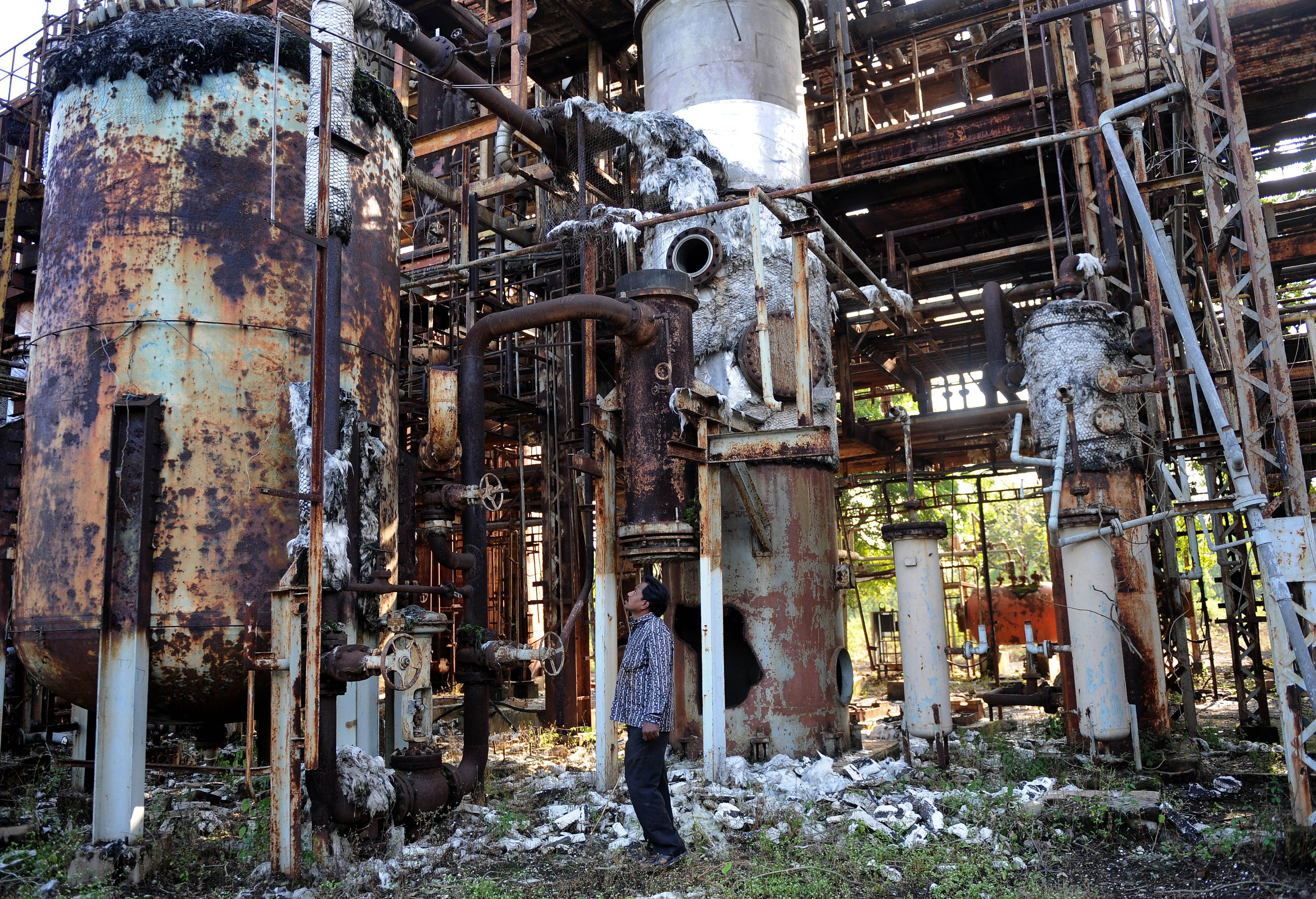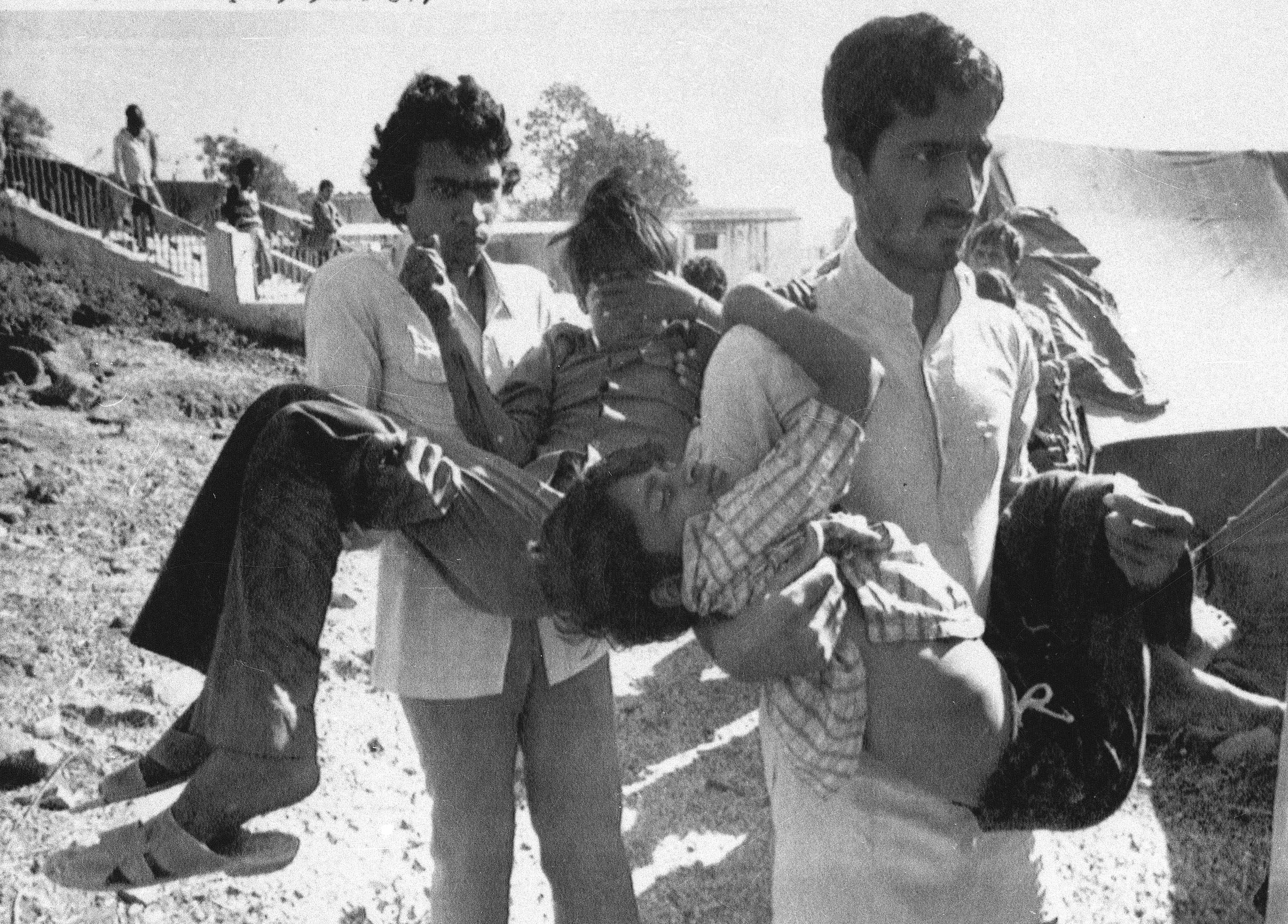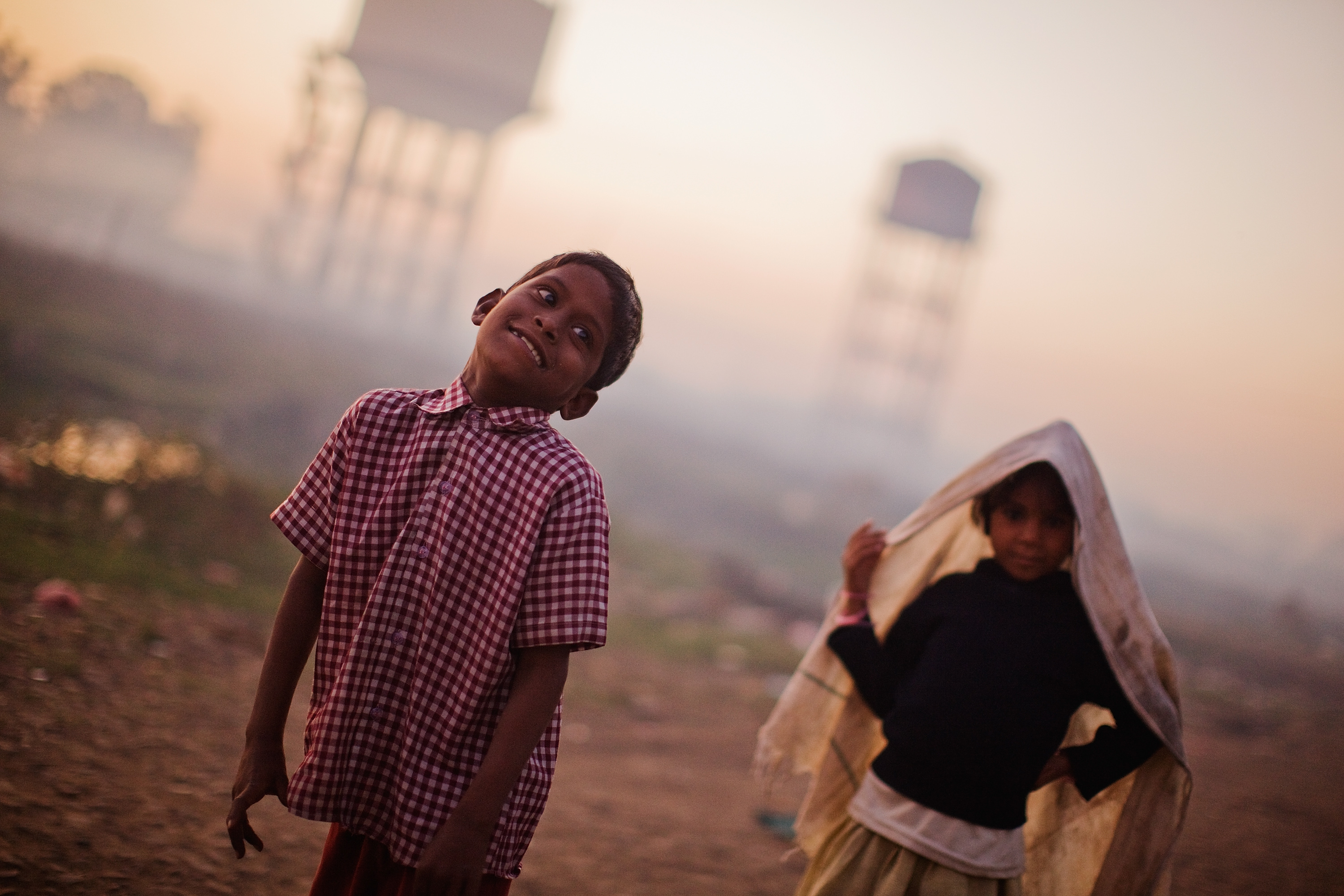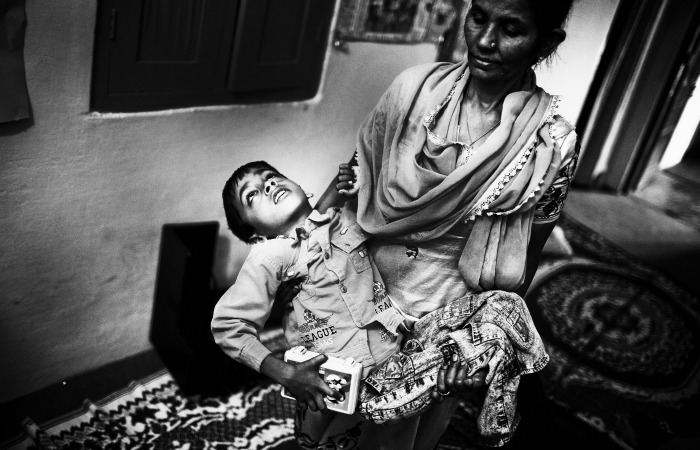
Dressed in a green shirt and blue pants, 11-year-old Sana sits in the corner of the dormitory where close to a 100 victims of Bhopal Gas tragedy have assembled in Mumbai. Every year, they march to Mumbai and put up an aggressive protest outside Union Carbide offices in the city. Sana’s mother Sakina bibi (30) says that her daughter is barely able to talk. She lost her voice five years ago after a cancer surgery. Sakina shifted to a colony less than a kilometre from the Union Carbide fertiliser factory premises, 12 years ago. The shanties depend on ground water for their daily requirements. Sakina had no option, but to make Sana drink that water — heavy with mercury and other poisonous chemicals. Doctors told Sakina that the water had caused a tumour in Sana’s throat that led to the loss of her voice.
It has been 30 years since the toxic methyl isocyanate gas leaked from the Union Carbide factory, a subsidiary of US-based Dow Chemicals. Warren Anderson, the late CEO of Union Carbide died earlier this year in Florida at a ripe old age of 94 after having lived a lavish life. On the other hand, three generations around the area affected by the gas tragedy are dying a slow death every day because of what had happened on the night of December 2 in 1984.

UCIL pesticide plant from where gas leaked - AFP
For seven years before the tragedy struck, waste generated in the Carbide fertilizer factory area used to be dumped in a nearby pond. Government hydro geologists eventually mapped the flow of the waste to determine that it is affecting communities to the north of the factory. The communities surrounding the factory were in for a double whammy as the gas blew in southern direction with the wind and at the same time the poisonous water affected the residents in northern and north eastern regions of Bhopal.
After the poisonous gas seeped into the ground, for years now, residents in 14 colonies around the Union Carbide plant has been consuming contaminated water extracted through hand pumps. Mercury levels in the ground water were found to be six times higher than the permissible limit set by World Health Organization (WHO).

Two men carry children blinded by the Union Carbide chemical pesticide leak to a hospital in 1984 -(File Photo) AP
On May 7, 2004, the Supreme Court had directed the Madhya Pradesh government to supply clean drinking water to 14 affected communities. After five years, the state government began supplying water through tankers. A budget of Rs14.29 crore was allocated for the purpose of laying a pipeline to supply water to the houses. The 150-kilometre-long pipeline would carry water to Bhopal from a reservoir of Narmada river. The deadline to complete the project was extended five times between 2009 and 2014.The water pipeline project initiated to supply pure water to people's homes was initiated in 2006. Only in August this year did people in colonies of the vicinity start receiving clean water in their taps.
Though 14 communities now receive clean tap water, activists have pointed out that ground water contamination is spreading farther north from the factory. It is now affecting close to 40 additional communities that do not have access to tap water.

10 year old Shyam Babu looks on as he plays outside his home near the Union Carbide factory - Getty Images
Around 5,74,370 persons were exposed to the deadly gas of which the government claims 5295 persons had died. The Indian Council of Medical Research (ICMR) conducted an epidemiological study of a sample of size of one lakh affected persons, of which, they reported, more than 12,000 persons may have died in the first nine years after the tragedy struck.
While the government dismissed 93% of the affected population as those suffering from 'temporary' injuries, the ICMR study indicates that 4,50,000 patients suffer from chronic disorders like cancer, early menopause, joint pain, depression, anxiety, ailments of the eyes, damage to the immune system, asthma, painful skin diseases, loss of sensation due to damage of nervous system or paralysis. Tuberculosis prevalence has increased by up to five times more than the cases recorded before the disaster.
Up to 10,000 children were in their mothers' wombs when the gas leaked. They were exposed in vitro to the gas. A scientific study which was conducted later pointed out that among the second generation born after the leak, there were cases of stunted mental and physical growth. An alarming number of birth defects is being noticed by doctors till date.

8 year old Annan is carried by Nafiza Bee co-ordinator of the Chingari Trust clinic on November 27, 2009- Getty Images
Lakhs of residents in Bhopal suffer from either chronic debilities or continue to fall sick due to consumption of unclean water. For them there is no respite from injustice.
The author is with dna @maitriporecha